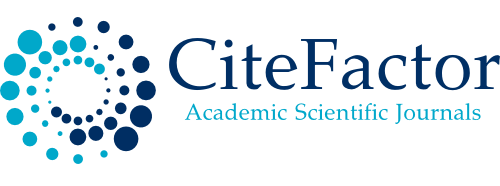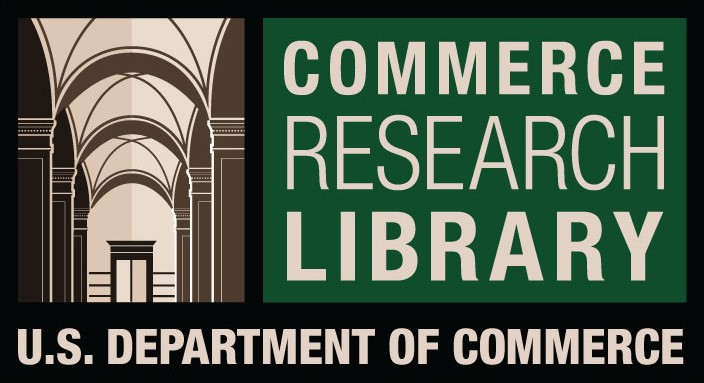A theoretical framework on Organizational Justice and Workplace Deviance
DOI:
https://doi.org/10.61841/9hcb7b44Keywords:
Organizational Justice, Workplace Deviance, Workplace Deviance Behaviour, BehaviourAbstract
The study of justice perceptions is an important area of research in organizational behavior studies because of its relationship to relevant individual and organizational outcomes (Cohen-Charash and Spector, 2001). Employees develop different types of justice assessments related to outcomes, decisions or interactions patterns within organization. Injustice or unfair treatment with employees leads to various types of deviant behavior at workplace as desired like stress, absenteeism, non-performance, politics, retaliatory intentions and turnover tend to increase (Colquitt et. al, 2001; Nirmala & Akhilesh, 2006). It may also lead to lower commitment levels, psychological disownership, psychological contract withdrawal etc due to dissatisfaction and demotivation arise because of unfair treatment (Pizzino, 2002). Workplace deviant behaviour is a prevailing and costly phenomenon that includes a wide range of negative acts conducted by employees to harm the organization and its members either voluntarily or involuntary. Research indicates that organizational justice is a dominant predictor of workplace deviant behaviour (Fatt, 2010). Specifically, the justice perspective proposes that workplace deviance is a reaction to the unfairness perceived by employees at their workplace. A rich body of research has investigated the relationship between employee’s fairness perceptions and various forms of workplace deviant behaviours. Yet, to date, a comprehensive review of the literature is unavailable that summarizes and integrates this stream of research. This study makes an attempt to understand the antecedents and to explain the relationship of organizational justice on workplace deviance behaviour to present at comprehensive framework to offer empirical studies in future research.
Downloads
References
1. Adams, J. S. (1963). Toward an understanding of inequity. Journal of Abnormal and Social Psychology, 67. 422-436.
2. Adams, J. S. (1965). Inequity in social exchange. In L. Berkowitz (Ed.), Advances in experimental social psychology, 2. 267-299. New York: Academic Press.
3. Aleksic, A., & Vukovic, M. (2018). Connecting personality traits with deviant workplace behavior. Journal of Media Critiques, 4 (14). .
4. Ambrose, M. L., & Schminke, M. (2001). Are flexible organizations the death knell for the future of procedural justice? In R. Cropanzano (Ed.), Justice in the workplace II: From theory to practice: 229-244. Hillsdale, NJ: Erlbaum.
5. Ambrose, M. L., & Schminke, M. (2003). Organization structure as a moderator of the relationship between procedural justice, interactional justice, perceived organizational support, and supervisory trust. Journal of Applied Psychology, 88, 295.
6. Arthur, J. B. (2011). Do HR system characteristics affect the frequency of interpersonal deviance in organizations? The role of team autonomy and internal labor market practices. Industrial Relations: A Journal of Economy and Society, 50(1), 30-56.
7. Bennett, R. J. & Robinson, S. L. (2003). The past, present, and future of workplace deviance research. In: Greenberg J, editor. Organizational Behavior: The State of the Science. 2nd ed. Mahwah, NJ: Lawrence Erlbaum Associate. 247-281
8. Bennett, R. J., & Robinson, S. L. (2000). Development of a measure of workplace deviance. Journal of Applied Psychology, 85, 349-360.
9. Bies, R. J., & Tripp, T. M. (1996). Beyond distrust: ―Getting even‖ and the need for revenge. In R.M. Kramer & T.R. Tyler (Eds.), Trust in organizations. Thousand Oaks, CA: Sage.
10. Bowles, H. R., & Gelfand, M. (2009). Status and the evaluation of workplace deviance. Psychological Science, 21(1), 49-54.
11. Cropanzano, R. and Greenberg, J. (1997). Progress in Organizational Justice: Tunnelling Through the Maze. International Review of Industrial and Organizational Psychology, 12(1), 318-372.
12. Fatt, C.K., Khin, E.W.S., & Heng, T.N. (2010). The Impact of Organizational Justice on Employee’s Job Satisfaction: The Malaysian Companies Perspectives. Am. J. Econ. Bus. Adm., 2(1): 56-63.
13. Giacalone, R. A., & Greenberg, J. (Eds.). (1997). Antisocial behavior in organizations. Sage.
14. Greenberg, J. (1993). Stealing in the name of justice: Informational and interpersonal moderators of theft reactions to underpayment inequity. Organizational Behavior and Human Decision Processes, 54, 81-103.
15. Greenberg, J. (1990). Employee theft as a reaction to underpayment inequity: The hidden cost of pay cuts. Journal of Applied Psychology, 75, 561-568.
16. Herzberg, F., & Mausner, B., (1959). The Motivation to Work, second ed. Wiley, NewYork.
17. Heydari, M., & Gholtash, A. (2014). An Investigation in to the Relationship between Procedural and Interactive Justice with Organizational Citizenship Behavior. Asian Journal of Humanities and Social Studies, 2(1). 152- 157.
18. Hoel, H., & Salin, D. (2003). Organisational antecedents of workplace bullying. In Einarsen, S., Hoel, H., Zapf, D., & Cooper, C. (Eds) Bullying and emotional abuse in the workplace: International perspectives in research and practice. London: Taylor & Francis, 15.
19. Ibrahim, M.E., & Perez, A.O. (2014). Effects of Organizational Justice, Employee Satisfaction, and Gender on Employees’ Commitment: Evidence from the UAE. International Journal of Business and Management, 9(2). 45-59.
20. Irving, P. G., Coleman, D. F., & Bobocel, D. R. (2005). The moderating effect of negative affectivity in the procedural justice-job satisfaction relation. Canadian Journal of Behavioural Science/Revue canadienne des sciences du comportement, 37(1), 20-32.
21. Jenkins, J.A. (2011).The American Courts: A Procedural Approach. Sudbury, Massachusetts: Jones & Bartlett Publishers
22. Jones, D. A., & Skarlicki, D. P. (2005). The effects of overhearing peers discuss an authority's fairness reputation on reactions to subsequent treatment. Journal of Applied Psychology, 90. 363-72.
23. Keashly, L., & Jagatic, K. (2002). By any other name: American perspectives on workplace bullying. In Bullying and emotional abuse in the workplace. 49-79. CRC press.
24. King, W.C.Jr., Miles, E.W., D.D., & Day (1993). A Test and Refinement of the Equity Sensitivity Construct, Journal of Organizational Behavior, 14. 301-317.
25. Konovsky, M.A. (2000). Understanding Procedural Justice and Its Impact On Business Organizations, Journal of Management, 26. 489-511.
26. Lee, C., & Farh J. L. (1999). The Effects of Gender in Organizational Justice Perception, Journal of Organizational Behavior, 20(1), 133-143.
27. Lee, M. B., & Saeed, I. (2001). Oppression and horizontal violence: The case of nurses in Pakistan. In Nursing Forum, Blackwell Publishing Ltd., 15-24.
28. Leung, K., & Lind, E.A. (1986). Procedural Justice and Culture: Effects of Culture, Gender, and Investigator Status on Procedural Preferences, Journal of Personality and Social Psychology, 50(6), 1134-1140.
29. Liu, N. T., & Ding, C. G. (2012). General ethical judgments, perceived organizational support, interactional justice, and workplace deviance, The International Journal of Human Resource Management, 23(13), 2712- 2735,
30. Doi: 10.1080/09585192.2011.610945.
31. Lu, H., E, A., While, K., & Barriball, L. (2005). Job satisfaction among nurses: a literature review. International Journal of Nursing Studies, 42, 2001-227.
32. McFarlin, D. & Sweeney, P. (1992). Distributive and Procedural Justice as Predictors of Satisfaction with Personal and Organizational Outcomes, Academy of Management Journal, 35, 626-37.
33. Mitchell, M. S., & Ambrose, M. L. (2007). Abusive supervision and workplace deviance and the moderating
effects of negative reciprocity beliefs. Journal of Applied Psychology, 92(4), 1159.
34. Moorman, R. (1991). Relationship between organizational justice and organizational citizenship behaviors: Do fairness perceptions influence employee citizenship? Journal of Applied Psychology, 76: 845-855.
35. Narayanan, K., & Murphy, S. E. (2017). Conceptual Framework on Workplace Deviance Behaviour: A Review. Journal of Human Values, 23(3), 218-233. 42.
36. Nasir, M., & Bashir, A. (2012). Examining workplace deviance in public sector organizations of Pakistan. International Journal of Social Economics, 39(4), 240-253.
37. Neuman, J., & Baron, R. (1998). Workplace Violence and Workplace Aggression: Evidence Concerning Specific Forms, Potential Causes, and Preferred Targets. Journal of Management, 24, 391-419.
38. Niehoff, B. P., & Moorman, R.H. (1993). Justice as a mediator of the relationship between methods of monitoring and organizational citizenship behavior. Academy of Management Journal, 36(3), 527-556. Doi: 10.2307/256591.
39. Omar, F., Halim, F., Zainah, A., & Farhadi, H. (2011). Stress and job satisfaction as antecedents of deviant workplace behavior. Deviant behavior, 16, 17.
40. Tang, T.L., & Sarsfield-Baldwin, L.J. (1996). Distributive and procedural justice as related to satisfaction and commitment. SAM Adv. Manage. J., 61(3). 25-31.
41. Thibaut, J., & Walker, L. (1975). Procedural justice: A psychological analysis. Hillsdale, NJ: Erlbaum.
42. Tyler, T.R. & R.J. Bies (1990). Beyond Formal Procedures: The Interpersonal Context Of Procedural Justice”, in J.S. Carroll (ed.), Applied Social Psychology and Organizational Settings, Hillsdale, NJ.: Lawrence Erlbaum Associates, 77-98.
43. Vardi, Y., & Weitz, E. (2004). Misbehavior in Organizations: Theory, Research, and Management. Hillsdale, NJ: Erlbaum.
44. Yunus, O.M., Khalid, S., & Nordin, M. (2012). A personality trait and workplace deviant behaviors. Human Resource Management, 47. 8678–8683.
Downloads
Published
Issue
Section
License

This work is licensed under a Creative Commons Attribution 4.0 International License.
You are free to:
- Share — copy and redistribute the material in any medium or format for any purpose, even commercially.
- Adapt — remix, transform, and build upon the material for any purpose, even commercially.
- The licensor cannot revoke these freedoms as long as you follow the license terms.
Under the following terms:
- Attribution — You must give appropriate credit , provide a link to the license, and indicate if changes were made . You may do so in any reasonable manner, but not in any way that suggests the licensor endorses you or your use.
- No additional restrictions — You may not apply legal terms or technological measures that legally restrict others from doing anything the license permits.
Notices:
You do not have to comply with the license for elements of the material in the public domain or where your use is permitted by an applicable exception or limitation .
No warranties are given. The license may not give you all of the permissions necessary for your intended use. For example, other rights such as publicity, privacy, or moral rights may limit how you use the material.









